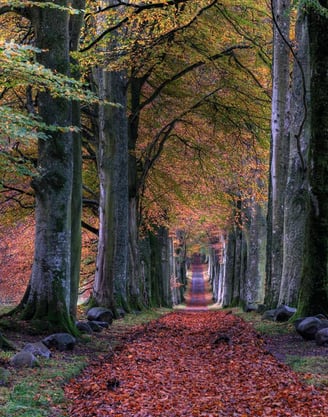Fall Writing Frenzy 2022
Winner!
Here in Vermont, we've taken a sharp turn into autumn. Crisp days with cloudless skies give way to cold nights when the west winds blow. One of my favorite seasons to write.
The Fall Writing Frenzy (FWF), hosted by Lydia Lukidis, Kaitlyn Sanchez, and guest judge, Alyssa Reynoso-Morris, seemed like a perfect opportunity to jump right in. This is my first time participating and I've really enjoyed the opportunity to play.
For those not familiar with the contest, the rules are simple - select one of the provided photos (fall-themed, of course) to inspire a short story (max 200 words) for kids of any age. You can read my entry below (hint: stay for the credits!):
B. must keep moving.
Everything in her young life depends on this quest. Succeed, and she will emerge a queen. Fail, and her familial lineage may be lost forever.
Somewhere, her brothers are on their own missions. But no one expects them to succeed. Anyway, they’ll all be dead soon.
Just like everyone else back home.
Her mother, the old queen is dead, killed by B.’s older sisters. Those same sisters raised B. until she was strong enough to leave – perhaps as a last gasp of duty, or something more tender. It was impossible to know. They’re all dead too.
Now, there is not much to eat. B. grows sluggish in the cold autumn air. The road runs red with the last of the leaves, but she doesn’t see. She must hurry. Death could claim her yet.
There! A cavity carved below mossy roots.
Coming closer, she senses it is empty - abandoned and beckoning.
B. dives in, descending into the damp and dark. Settling, a stillness overcomes her. Here, B. will wait out winter, dormant.
Safe - for now. Until she rises again to claim territory, build a colony, and rule as a queen bumblebee - her quest complete.
Thanks for reading! A huge shout out to my critique partners and new friends in the writing community who helped shape this piece. The FWF inspired me to challenge myself in another way - blogging! As a nature nerd who loves learning, I started this blog just to share some science from the story. Enjoy!
BONUS: facts behind the fiction!
Bumblebees are social animals, living in colonies that consist of a queen and workers - her female offspring. The queen suppresses the worker's reproductive drive as the colony grows over warmer months. Eventually, the capacity of the colony may allow for workers to also lay eggs, creating a competitive, aggressive environment. Occasionally, the workers will kill the queen during this shift. Around this time (late summer), new queens and males (drones) are produced to continue the family line. Worker bees will care for them, regardless of the colony-wide social dynamics.
When mature, drones will leave to mate with new queens. While most never mate, all will die before winter. The workers and old queen back at the nest will also die before winter. Only the young, newly-mated queens, will overwinter underground, in leaf litter, soil, or in small crevices*. Their dormancy state, called diapause, is incredibly taxing and can lead to mortality.
Come spring, a queen will emerge alone, using up the last of her energy to find nectar. Then she will "quest" again (actual term) for a new nesting site to begin a colony. After selecting a site, a queen will make a mound of pollen and wax where she will lay her first brood of eggs. She also makes herself a nectar pot to sip from as she incubates the eggs until the larvae hatch. Roughly two weeks later, the larvae will spin cocoons around themselves and develop into adult bees. They become new workers, who take over the jobs of collecting food and tending to future broods. From this point on, the queen will remain in the nest, aging until the fall when she dies and new queens leave to begin quests of their own.
Bumblebees are generalists, which means they forage on a wide variety of plants. They are often the first bees active in spring and the last foraging in fall. Lastly, bumblebees see ultraviolet, and cannot see the color red.
*Not much is known about where they overwinter and you can get involved in citizen science efforts to locate and track overwintering sites.
Select Sources:
https://www.xerces.org/bumblebees/about
https://www.bumblebeeconservation.org/lifecycle/
https://ento.psu.edu/news/winter-survival-guide-for-queen-bumble-bees
https://pubmed.ncbi.nlm.nih.gov/34417514/
Copyright © 2022 All Rights Reserved
A Young Queen’s Quest
Alexandra Z Millarhouse
(200 wc)

